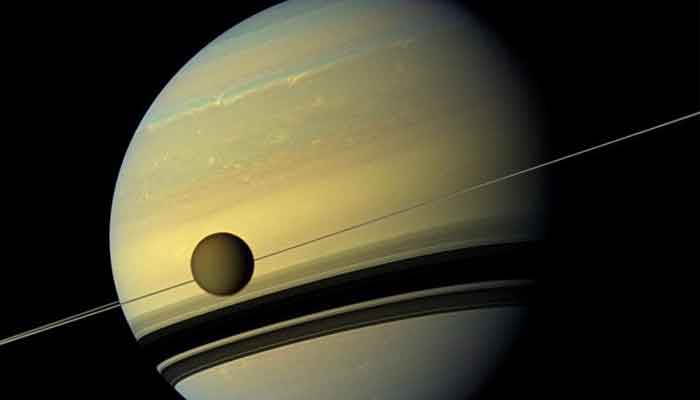Research reveals new details about Titan's rivers
Saturn's moon remains only planetary body in our solar system with liquid flowing on surface besides Earth
April 27, 2025

It has been known by the scientists for a while that Saturn's largest moon, Titan, has rivers and seas of liquid methane on its surface.
However, new study suggests that it's strangely lacking in deltas, reported Live Science.
Large rivers create deltas with sediment-filled wetlands on Earth. Deltas form when the mouth of a river empties into another body of water.
Titan is the only planetary body in our solar system with liquid flowing on the surface besides Earth.
Researchers recently looked for deltas on the big Saturn satellite but came up empty.
"We take it for granted that if you have rivers and sediments, you get deltas," study leader Sam Birch said in a statement.
"But Titan is weird. It's a playground for studying processes we thought we understood," he added.
As deltas are landforms with a lot of sediment, the researchers were hoping to locate them on Titan. Deltas collect sediment in one location, and it usually comes from a wide area. Investigating such silt may provide information on Titan's tectonic past and temperature, as well as possibly even evidence of extraterrestrial life.
"It's kind of disappointing as a geomorphologist, because deltas should preserve so much of Titan's history," Birch said.
We know that Titan's surface has flowing liquid methane, because Nasa's Cassini spacecraft spotted evidence of the stuff on multiple flybys.
During these close approaches, Cassini employed synthetic aperture radar (SAR) to see through Titan's dense atmosphere, finding vast flat patches and channels that are compatible with massive liquid masses.
However, Cassini's SAR data shows that shallow liquid methane is mostly clear. Because it is difficult to distinguish between the sea floor and the coast, scientists have found it challenging to examine Titan's coastline features.
In order to replicate what Cassini's SAR would see when observing Earth, Birch's team developed a computer model. However, Titan's liquid methane was used in the model in place of the water found in Earth's rivers and oceans.
"We basically made synthetic SAR images of Earth that assume properties of Titan's liquid instead of Earth's," Birch said. "Once we see SAR images of a landscape we know very well, we can go back to Titan and understand a bit better what we're looking at."











